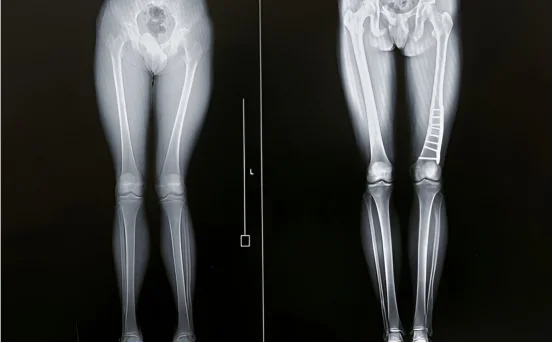When it comes to oral health, tooth extraction is often considered a last resort. However, there are many instances when removing a tooth becomes necessary to prevent further complications. Whether it’s due to tooth decay, trauma, or overcrowding, understanding the types of tooth extractions surgery can help you make informed decisions and ease anxiety surrounding the procedure.
What Is Tooth Extraction?
Tooth extraction is the process of removing a tooth from its socket in the jawbone. Dentists and oral surgeons perform this procedure for various reasons, including infection, tooth damage, or to make space in the mouth before orthodontic treatments.
Types of Tooth Extractions Surgery
Tooth extractions are generally divided into two main types of tooth extractions surgery:
- Simple extractions
- Surgical extractions
Let’s take a closer look at each type and the specific procedures involved.
- Simple Tooth Extraction What Is It? :- Simple tooth extraction surgery is a straightforward procedure performed on teeth that are visible in the mouth. These teeth are usually intact and easy to remove using forceps without the need for surgical intervention.When Is It Needed?
- Severely decayed teeth
- Loose teeth due to gum disease
- Teeth that are broken but still above the gum line
- Baby teeth that don’t fall out naturally
- Surgical Tooth Extraction What Is It? :- Surgical extraction is a more complex procedure for removing teeth that are not easily accessible. This includes teeth that are impacted, broken at the gum line, or haven’t fully erupted.This procedure is usually performed by an oral surgeon and may require incisions in the gum and removal of bone tissue.
When Is It Needed?
- Impacted wisdom teeth
- Severely broken teeth
- Teeth with long or curved root
- Teeth beneath the gum line
- Infections or abscesses requiring tooth removal
Procedure :- Surgical extraction is usually done under local anesthesia, conscious sedation, or even general anesthesia, depending on the complexity. The oral surgeon makes an incision in the gum, may remove some bone around the tooth, and then extracts it. In some cases, the tooth is cut into smaller pieces to facilitate removal.
- Wisdom Tooth Extraction (Third Molar Surgery) Why Remove Wisdom Teeth :- Wisdom teeth are the last to erupt, usually between ages 17 and 25. Often, there’s not enough room in the mouth to accommodate them, leading to impaction, misalignment, or infection.Types of Extraction
- Simple extraction :- If the wisdom tooth is fully erupted and positioned correctly.
- Surgical extraction :- For impacted or partially erupted wisdom teeth.
Common Issues Caused by Wisdom Teeth
- Jaw pain
- Infection or gum disease
- Damage to adjacent teeth
- Cysts or tumors around the impacted tooth
- Impacted Tooth Extraction :- An impacted tooth is one that has not erupted through the gum or is only partially erupted. This often happens with wisdom teeth but can affect other teeth as well.
- Take X-rays to assess the tooth’s position
- Administer anesthesia
- Make an incision in the gum
- Sometimes cut away bone tissue
- Extract the tooth, possibly in pieces
- Orthodontic-Related Tooth Extraction :- In some orthodontic cases, tooth extraction is required to create space for proper teeth alignment. This is common in cases of overcrowding or severe malocclusion (misaligned bite).
- Patients undergoing braces
- Those with extra (supernumerary) teeth
- Severe overcrowding cases
These are typically simple extractions but can be surgical in complicated cases.
- Extraction Due to Periodontal Disease :- Periodontal disease affects the gums and supporting structures of the teeth. Advanced stages can lead to bone and tissue loss, making the tooth loose.
- Simple extraction :- If the tooth is loose enough.
- Surgical extraction :- If the infection has spread or the tooth is broken.
- Emergency Tooth Extraction :- Sometimes, extractions need to happen urgently, especially in the case of:
- Severe toothache with no other treatment option
- Dental trauma
- Infection spreading to the jaw or bloodstream
Depending on the situation, the dentist may perform a simple or surgical extraction.
- Post-Operative Care and Recovery :- Proper aftercare is crucial for a smooth recovery. Here are standard post-op recommendations:
- Rest for at least 24 hours
- Apply ice packs to reduce swelling
- Avoid drinking with a straw for 24 hours to prevent dry socket
- Eat soft foods like yogurt, mashed potatoes, or soup
- Take prescribed medications, including pain relievers and antibiotics
- Avoid smoking or alcohol for a few days
Healing typically takes about 7–10 days for simple extractions and up to 2–3 weeks for surgical ones.
Risks and Complications
While generally safe, tooth extractions can sometimes lead to complications such as:
- Dry socket (painful inflammation if the blood clot is dislodged)
- Infection
- Excessive bleeding
- Jaw stiffness or swelling
- Nerve injury (rare)
Always follow your dentist’s aftercare instructions to minimize risks.
Conclusion
Types of Tooth Extractions Surgery, whether simple or surgical, are essential dental procedures that help preserve overall oral health. Understanding the types of tooth extraction surgeries empowers patients to face the process with less fear and more confidence.
If you’re experiencing pain, overcrowding, or dental trauma, consult a dental professional to determine whether extraction is necessary and which type is appropriate.























